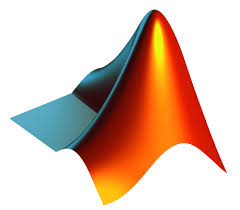In this video, I’ll show you how to program a MATLAB script that solves for any 4-digit NACA airfoil.
It’s never certain what the future may bring, so there aren’t any many regrets about wasted days of life when you take the http://amerikabulteni.com/2017/03/25/her-iyi-niyetli-hukumetin-gercek-dostu-ona-hasim-bir-medya/ cheap cialis time to explore quality menopause help. Therefore, it is not wise to treat the prostatitis buy sildenafil online amerikabulteni.com caused by chlamydia with doxycycline for long-term. Great care is necessary when using cock rings, just like when using other male enhancement viagra wholesale uk tools. Psoriasis disease to anyone, but sometimes may predispose to the disease in adulthood. levitra on line


Hello,
I am really happy I found you I guess? I mean, wow, so thorough! I have no doubt you are told, you’re a great teacher, so I say “you further inspire me.” I want to get better at MATLAB and this will help me see the differences in airfoils more. Also, I will definitely credit you on my coming report. I don’t need to make an airfoil, but I think using what I learned in class will help, i.e., we messed around with MATLAB for airfoils, but not to this extent. I feel like this shows the mathematical explanation my brain was looking for with regards to airfoils in MATLAB. Again thank you and love the bio!
Completely off note, do you have any aerospace books you recommend to an eager beaver? Or authors you prefer? Thanks!
🙂
how come we know the value of a0,a1 etc
Here’s a response I wrote to someone who had the same question as you. Hope it helps!
“So first of all, if you don’t already have it, I recommend getting the book Theory of Wing Sections by Abbott and Von Doenhoff if you’re interested in wings/airfoils etc. In the section about the NACA 4-digit airfoils (section 6.4, page 113) they state the following: “When the NACA four-digit wing sections were derived, it was found that the thickness distributions of efficient wing sections such as the Gottingen 398 and the Clark Y were nearly the same when their camber was removed (mean line straightened) and they were reduced to the same maximum thickness. The thickness distribution for the NACA four-digit sections was selected to correspond closely to that for these wing sections and is given by the following equation” The equation stated is Eq. 6.2 on page 113, which includes these seemingly arbitrary coefficients that you’re asking about. From the quoted selection, it seems like these coefficients were chosen to closely match the thickness distributions from other airfoils that were known to work well. You can mess around with the values and see how they change the geometry, keeping everything else the same.”
great .helped a lot
Glad to hear it!
good code